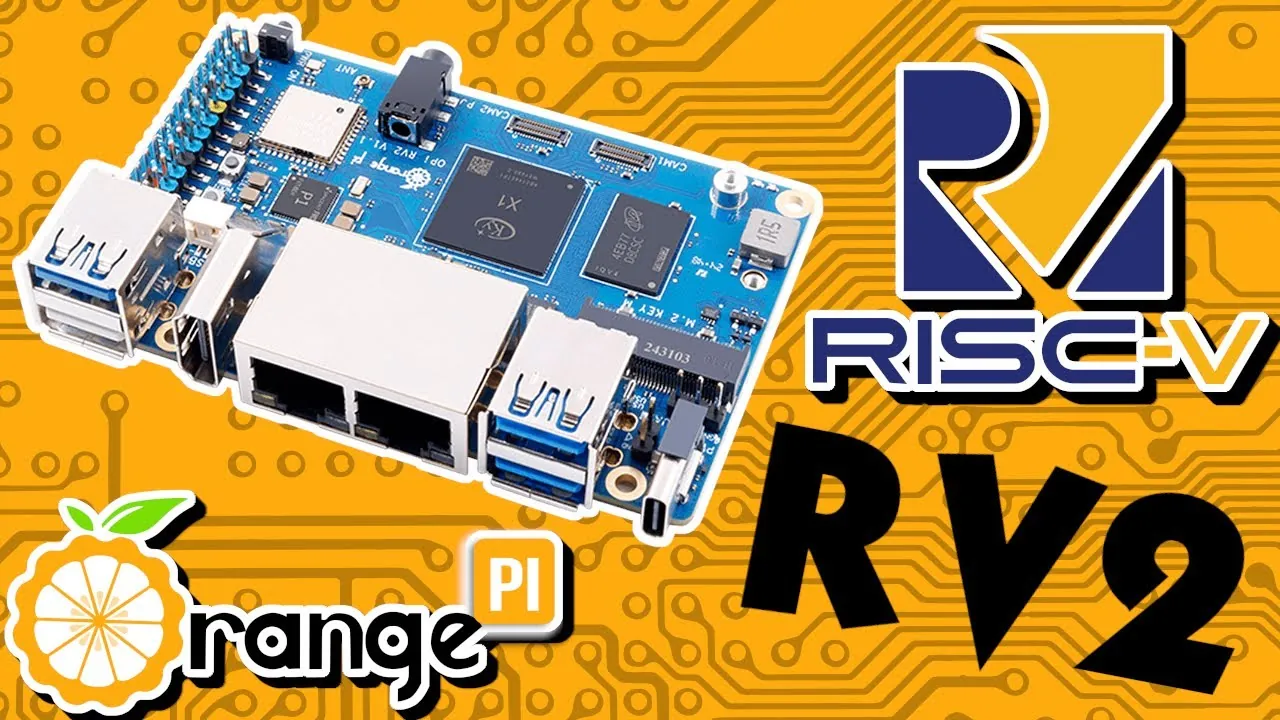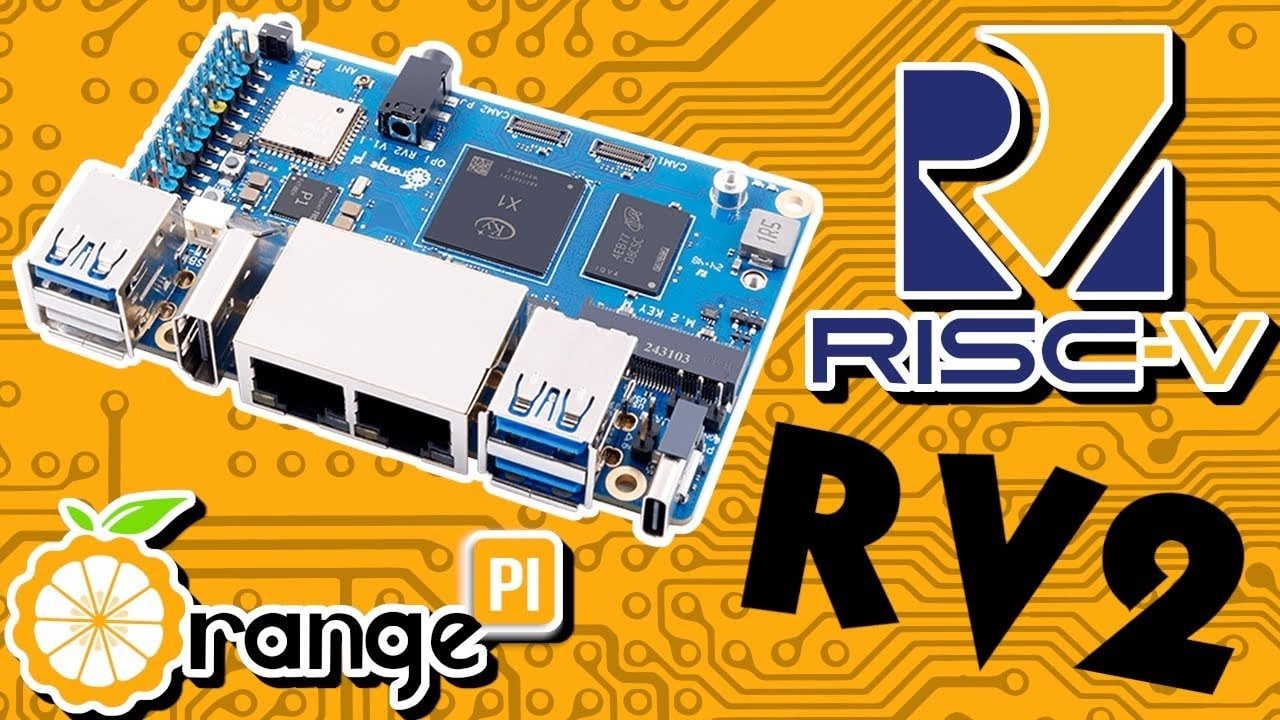
What if you could explore the innovative world of RISC-V computing without breaking the bank? The Orange Pi RV2 promises exactly that, a budget-friendly gateway into an architecture that’s reshaping the future of processors. With its 8-core RISC-V processor, a host of connectivity options, and a price tag starting at just $40, this single-board computer (SBC) is designed to appeal to developers, hobbyists, and industry professionals alike. But here’s the catch: while it excels in specialized tasks like IoT and lightweight AI, it’s not built to replace your desktop PC. This duality makes the RV2 both intriguing and polarizing, raising the question: can affordability and innovation truly coexist in the world of SBCs?
In this overview, Interfacing Linux explores what makes the Orange Pi RV2 a standout in its niche, from its energy-efficient design to its versatile hardware capabilities. You’ll discover how its dual NVMe slots, GPIO interface, and AI-optimized processor open doors to industrial automation and IoT projects, while also uncovering its limitations in software support and desktop performance. Whether you’re a tinkerer eager to experiment with RISC-V or a professional seeking a cost-effective solution for specialized applications, the RV2 offers plenty to unpack. By the end, you might just find yourself rethinking what’s possible with a $40 SBC.
Orange Pi RV2 Overview
TL;DR Key Takeaways :
- The Orange Pi RV2 is a cost-effective single-board computer powered by an 8-core RISC-V processor, designed for developers, hobbyists, and industrial users, with a focus on lightweight AI and automation tasks.
- It offers versatile connectivity options, including Wi-Fi, Bluetooth 5, dual gigabit Ethernet ports, USB 3.0, USB Type-C, HDMI (1080p), and a GPIO interface, making it suitable for IoT and industrial applications.
- Performance is mixed, excelling in lightweight media playback and basic AI tasks but falling short for demanding desktop computing, high-end video processing, or advanced AI workloads.
- Energy efficiency is a key strength, with low power consumption (1.5W idle, 5W full load), making it ideal for continuous operation in IoT and industrial automation projects.
- Starting at $40, it provides an affordable entry into RISC-V computing, but limitations in desktop performance, heat management, and software support make it better suited for niche applications rather than general-purpose use.
The Orange Pi RV2 is powered by an 8-core RISC-V processor, optimized for lightweight AI workloads and industrial automation tasks. It is available in three memory configurations, 2GB, 4GB, and 8GB, allowing you to choose a model that best fits your project requirements. For storage, the board offers a high degree of flexibility, featuring dual NVMe slots, eMMC support, and an SD card slot. These options cater to both high-speed storage needs and removable media.
Connectivity is one of the RV2’s standout features, offering a variety of options for different use cases:
- Wi-Fi and Bluetooth 5: Reliable wireless communication for IoT and remote applications.
- Dual gigabit Ethernet ports: Enhanced wired networking capabilities for industrial or server-like setups.
- Three USB 3.0 ports and a USB Type-C port: Broad compatibility with peripherals and accessories.
- HDMI output: Support for connecting displays, though limited to 1080p output.
- GPIO interface: Ideal for hardware integration and automation projects.
These features make the RV2 a versatile platform, suitable for a range of applications from IoT to industrial control systems.
Performance: Strengths and Weaknesses
The Orange Pi RV2 delivers a mixed performance profile, excelling in some areas while falling short in others. It supports 1080p media playback and can handle 4K content, though the output is downscaled to 1080p. This makes it suitable for lightweight media applications but less ideal for high-end video processing or demanding desktop tasks.
Benchmark comparisons place the RV2 below the Raspberry Pi 4 in overall performance but above the Raspberry Pi Zero 2 W, positioning it as a mid-tier option for basic computing needs. Its AI capabilities are modest, allowing tasks like object detection and simple machine learning models. However, it struggles with more complex workloads, such as running large language models (LLMs) or advanced AI applications.
Orange Pi RV2 Affordable RISC-V Computing
Advance your skills in RISC-V by reading more of our detailed content.
Software and Usability
The RV2 supports Linux-based operating systems, providing a developer-friendly environment for customization and experimentation. However, setting up the board can be challenging, particularly when configuring it to boot from NVMe or eMMC storage. While Docker compatibility is advertised, its functionality is somewhat limited, making it less suitable for advanced containerized workflows.
For users familiar with Linux, the RV2 offers a robust platform for development. However, the lack of comprehensive software support for certain applications, such as OpenWRT, may limit its appeal to those seeking a seamless, out-of-the-box experience.
Networking and Connectivity Performance
The networking capabilities of the Orange Pi RV2 are reliable but come with some limitations. Wireless connectivity through Wi-Fi and Bluetooth 5 performs consistently, making it suitable for IoT and remote applications. However, the dual gigabit Ethernet ports, while promising on paper, can experience inconsistent speeds due to CPU bottlenecks. This can impact tasks such as file transfers or remote access via SSH, particularly in scenarios requiring high-speed networking.
These constraints make the RV2 better suited for applications where networking performance is not the primary focus. For projects requiring stable but moderate-speed connectivity, the board performs adequately.
Energy Efficiency
One of the most notable features of the Orange Pi RV2 is its low power consumption. At idle, the board consumes approximately 1.5 watts, and under full load, it uses around 5 watts. This energy efficiency makes it an excellent choice for projects requiring continuous operation, such as industrial automation or IoT deployments. Its low power draw also reduces operational costs, making it an attractive option for energy-conscious users.
Ideal Use Cases
The Orange Pi RV2 is best suited for specialized applications rather than general-purpose computing. Its industrial control capabilities and GPIO interface make it an excellent choice for automation projects, where hardware integration is a priority. In IoT applications, the board’s low power consumption and dual NVMe slots provide a reliable platform for data collection and lightweight processing.
For media playback, the RV2 performs adequately, supporting 1080p content and downscaled 4K video. It can also handle lightweight AI workloads, such as image recognition or basic machine learning tasks. Additionally, its ability to operate in headless mode makes it suitable for environments where a display is unnecessary, such as remote servers or embedded systems.
Challenges and Limitations
Despite its strengths, the Orange Pi RV2 has several limitations that may affect its usability in certain scenarios:
- Desktop Performance: The board’s limited graphics capabilities make it unsuitable for demanding desktop computing tasks or high-end video processing.
- Heat Management: Under heavy workloads, the RV2 generates significant heat, necessitating additional cooling solutions to maintain stable performance.
- Software Support: While the board supports Linux-based operating systems, some software, such as OpenWRT, lacks full functionality, which may deter users seeking a seamless experience.
These challenges highlight the RV2’s focus on niche applications rather than general-purpose use, making it important to evaluate its suitability for your specific project needs.
Affordability and Value
Starting at just $40, the Orange Pi RV2 offers an affordable entry point into the world of RISC-V computing. Its low price makes it particularly appealing to hobbyists and developers interested in experimenting with this emerging architecture. However, its limitations in desktop performance, software support, and heat management mean it is best suited for specific use cases rather than as a general-purpose SBC.
For those seeking a cost-effective solution for industrial, IoT, or lightweight AI applications, the RV2 provides excellent value. However, users requiring a more versatile or high-performance computing platform may need to consider alternative options.
Media Credit: Interfacing Linux
Filed Under: AI, Hardware, Top News
Latest Geeky Gadgets Deals
Disclosure: Some of our articles include affiliate links. If you buy something through one of these links, Geeky Gadgets may earn an affiliate commission. Learn about our Disclosure Policy.
